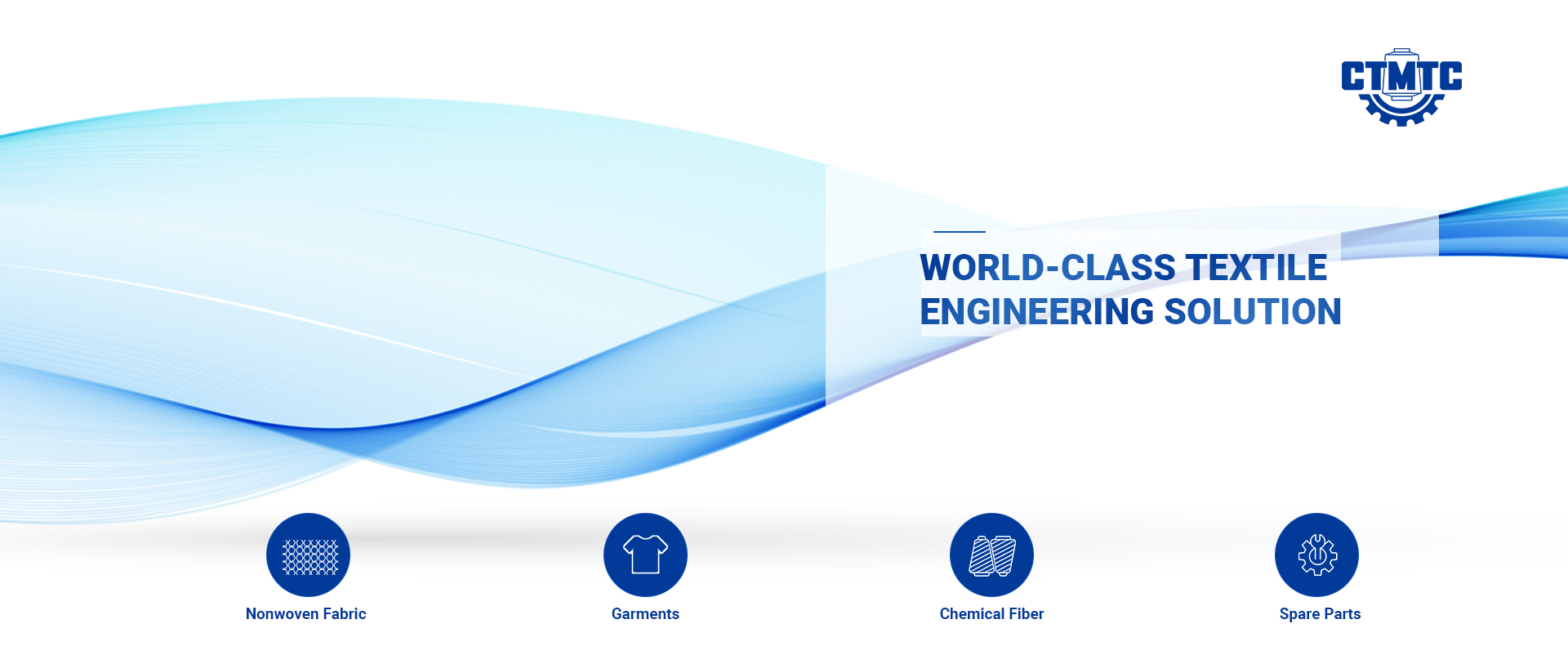Polyester Staple Fiber Production Line History
- The PSF machinery were manufactured in early 1970s.
- In middle 1990s, we began to research and develop 100t/d production line; and in 2002, this line was put into production.
- Developed the whole set of 120t/d production line in 2003.
- From 2005 to 2011, the 150t/d product line was put into batch production.
- In 2012, the 200t/d PSF product line ran successfully.
- Recent max. Capacity of one line: 225t/d.
- More than 200 lines have been running successfully all over the world, in which more than 100 are of large capacity.
- Till now, first-class fiber rate can reach over 98% and that of high-class fiber is over 95%.
Process flow of polyester spinning line from bottle flakes or chips
Polyester bottle flakes or chips – Heated and dried-hopper-Screw extruder –Melt filter – Spinning beam –Metering pump-Spinning packs –Quenching system-Spinning tunnel- Take-up machine – Capstan – Traverse machine (fiber cans)
Process Flow of Polyester After-treatment Line (Toyobo process route)
Creel – Prefeed Module (5 rollers + 1 immersion roller) – Immersion Bath – Immersion Roller – Draw Stand 1 ( 5 rollers + 1 immersion roller) – Draw Bath – Draw Stand 2 (5 rollers + 1 immersion roller) – Steam Heating Box – Draw Stand 3 (12 rollers) – Annealer (5 rollers) – Oiling Stacker – (Trio – Tension Roller) – Pre-crimper Heating Box – Crimper – Cooling Conveyor (or Tow Plaiter – Dryer) – Oil Sprayer – Tension Stand – Cutter – Baler
Process Flow of Polyester After-treatment Line (Fleissner process route)
Creel – Prefeed Module (7 rollers) – Immersion Bath – Draw Stand 1 ( 7 rollers ) – Draw Bath – Draw Stand 2 (7 rollers) – Steam Heating Box – Annealer (18 jacket rollers) – Cooling Sprayer – Draw Stand 3 (7 rollers) – Tow Stacker — Trio – Tension Roller – Pre-crimper Heating Box – Crimper — Tow Plaiter – Dryer – Tension Stand – Cutter – Baler
Fiber Index (For Reference)
|
No. |
Items |
Solid Fiber |
Mid Fiber |
Wool Type |
|||||||||||||
|
High-Tenacity |
Normal |
||||||||||||||||
|
Best |
Grade A |
Qualified |
Best |
Grade A |
Qualified |
Best |
Grade A |
Qualified |
Best |
Grade A |
Qualified |
||||||
|
8 |
Number of crimp /(pc/25mm) |
M2±2.5 |
M2±3.5 |
M2±2.5 |
M2±3.5 |
M2±2.5 |
M2±3.5 |
M2±2.5 |
M2±3.5 |
||||||||
|
9 |
Crimp ratio/% |
M3±2.5 |
M3±3.5 |
M3±2.5 |
M3±3.5 |
M3±2.5 |
M3±3.5 |
M3±2.5 |
M3±3.5 |
||||||||
|
10 |
Shrinkage at 180℃ |
M4±2.0 |
M4±3.0 |
M4±2.0 |
M4±3.0 |
M4±2.0 |
M4±3.0 |
M4±2.0 |
M4±3.0 |
||||||||
|
11 |
Specific resistance /Ω*cm ≤ |
M5×108 |
M5×109 |
M5×108 |
M5×109 |
M5×108 |
M5×109 |
M5×108 |
M5×109 |
||||||||
|
12 |
10% enlongation / (CN/dtex) ≥ |
2.8 |
2.4 |
2 |
—— |
—— |
—— |
—— |
—— |
—— |
—— |
—— |
—— |
||||
|
13 |
Variation of break strength /≤ |
10 |
15 |
10 |
—— |
—— |
13 |
—— |
—— |
—— |
—— |
—— |
|||||
Post time: Sep-05-2022

